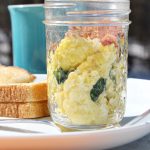In recent years, families across the country have been making the switch from mass-produced grocery store eggs to locally sourced fresh farm eggs—and for good reason. Whether it’s for health, taste, sustainability, or supporting the local economy, fresh eggs from your neighborhood farm stand offer real advantages that go beyond the breakfast plate.
Here at Dutch Country Farm Market in Spring City, PA, we’ve seen a growing number of customers seeking out farm-fresh eggs, and we’re proud to be part of the local food movement that’s putting quality and transparency back at the center of mealtime.
1. Superior Nutrition Starts at the Source
Fresh farm eggs are often noticeably richer in nutrients compared to their commercial counterparts. When hens are raised in pasture environments and fed natural, non-GMO diets, their eggs typically contain:
- More omega-3 fatty acids
- Higher levels of vitamins A, D, and E
- Less cholesterol and saturated fat
- Richer, darker yolks from natural foraging
The difference starts with how the hens are treated and what they’re fed. At Dutch Country Farm Market, our eggs come from happy, well-cared-for hens raised by trusted local farmers who prioritize animal welfare and sustainable practices.
2. Taste You Can Truly Taste
If you’ve ever cracked open a fresh farm egg, you’ve likely noticed the vibrant orange yolk and firmer whites. The flavor is fuller, more robust, and makes a real difference in your morning omelets, baked goods, or homemade pasta.
Unlike supermarket eggs—which may have sat in storage or transit for weeks—farm-fresh eggs are collected and sold within days, retaining their natural flavor and texture. That freshness shines through with every bite.
3. Safer, More Transparent Food
When you buy fresh farm eggs from a local market like ours, you know exactly where your food is coming from. No guessing about the supply chain, no confusion about labels like “cage-free” or “organic.” You can talk to the farmers, ask about their practices, and see the difference firsthand.
This level of transparency offers peace of mind—especially for families with children or anyone trying to eat more mindfully.
4. Support for Local Farmers and the Local Economy
Every time you choose local farm eggs, you’re supporting real families and small farms—not large, industrial operations. These dollars stay within the community, helping to preserve farmland, promote sustainable agriculture, and keep local traditions alive.
At Dutch Country Farm Market, our relationships with nearby farmers mean we’re able to bring you the freshest, highest-quality eggs while also helping small-scale agriculture thrive in Chester County and beyond.
5. More Sustainable and Humane
Locally sourced fresh farm eggs are often produced with significantly lower environmental impact. Smaller operations generally use fewer fossil fuels and create less waste than large-scale egg factories. Plus, many local farmers embrace regenerative practices that support soil health, biodiversity, and humane treatment of animals.
Choosing farm-fresh eggs isn’t just a better option for your breakfast—it’s a more ethical and sustainable choice for the planet.
Make the Switch Today
Whether you’re health-conscious, environmentally aware, or just in search of better-tasting food, fresh farm eggs offer countless benefits. And when you buy from a trusted local source like Dutch Country Farm Market, you know you’re getting quality you can count on.
Stop by our farm stand in Spring City, PA to pick up your next dozen, and taste the difference for yourself. Your body, your taste buds, and your community will thank you.






Leave a Reply